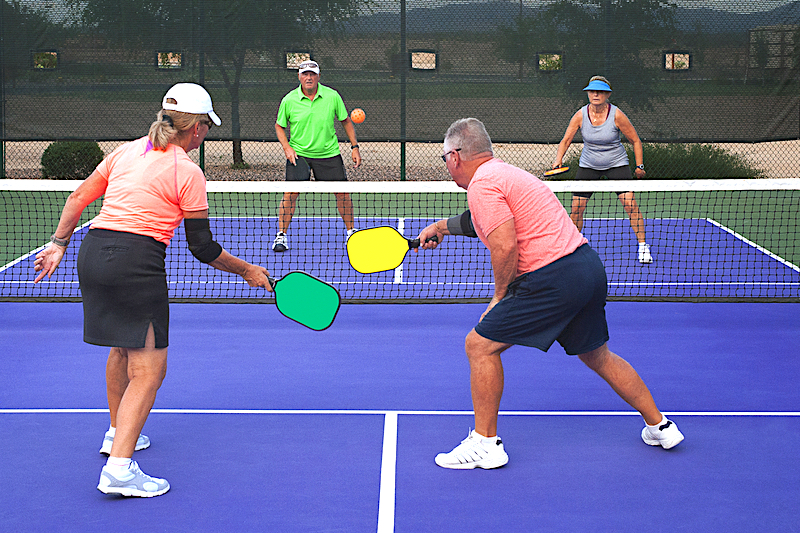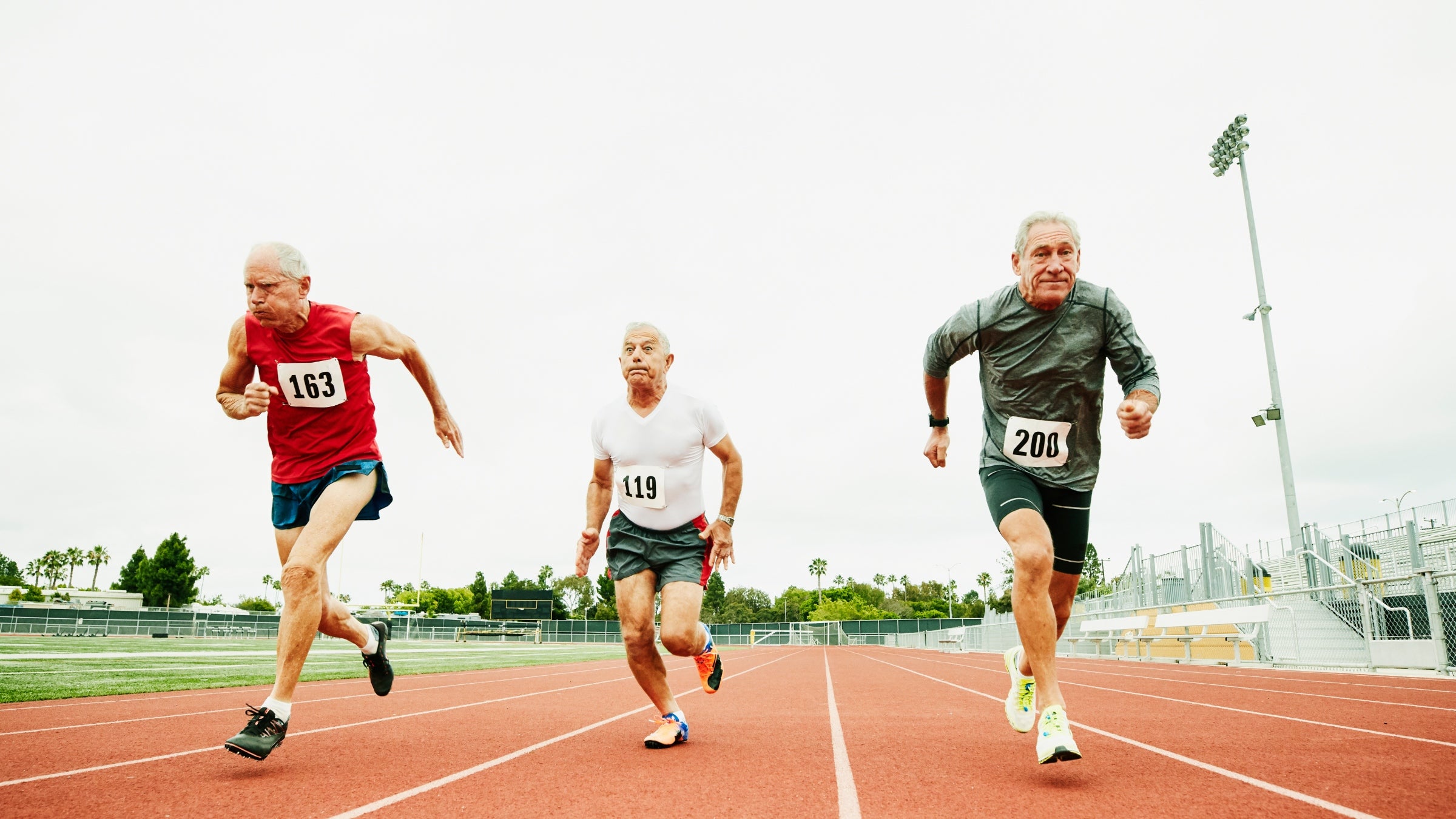6 Chapter Six: Aging in Sport
Section One: The Fundamentals
A) Keywords
Exercise 1:
Provide a brief definition of one of the padlet keywords for this week.
| equity: fairness and justice in treatment, emphasizing the need to address individual circumstances and systemic disparities to ensure equal opportunities, different than equality where everyone gets the same, this accommodates differences/disparities to ensure fairness.
|
B) The Social Significance of Aging in Sport
Exercise 2: Notebook Prompt
How is old age popularly represented today? Find an image online that you think exemplifies one defining attitude towards old age and paste in your notebook below with a brief explanation of what this image means to you.
i think old age is popularly represented pretty similarly to how it was in ancient Greece, although we have moved past that a bit to adapt a more positive and active image. “healthy aging” narratives are very popular online, often promoting low impact physical activities like pickleball, which has largely grown in popularity. still though, old age is a “scary” and “ugly” topic/concept that we desperately try to avoid, made evident with the anti-aging products and articles EVERYWHERE. this image represents a defining attitude towards old age, because to me, the mask of a younger face symbolizes the desire to conceal aging and conform to youthful standards. this highlights societies tendency to view aging as something to hide and combat, an example of this view is middle aged or older women refusing to tell anyone their age, as if it is something to be embarrassed about. 
|
Exercise 3: Notebook Prompt
What does the article (referencing another study by Dionigi) mean by its statement that sport can help aging people to simultaneously “accept and resist the ageing process” (572)? Respond by audio or text and find paste two images sourced online into your notebook showing how sport might help aging people to both accept and resist the aging process.
| what it means is that sport can help individuals accept and come to terms with the realities of aging, like physical limitations, while also resisting the aging process by promoting healthier aging and better physical outcomes. the resisting the ageing process part could also mean challenging ageist stereotypes, like health/performance decline and inactivity, by maintaining active, competitive lifestyles. to me, this first image shows how sport can help aging people accept the aging process, because they’re embracing a low impact sport like pickleball that is suited for their capabilities, acknowledging and adapting to age-related changes. the second image shows aging people using sport to resist the aging process, as we can see they are running and pushing their limits, getting a good workout that may lead to better health outcomes, and also resisting societal expectations of decline and inactivity in old age. another interpretation of sports being a mode of resisting aging i just thought of is through the sense of community and connectedness with peers, which often i think loneliness is associated with the process of aging, so making connections in sport is resisting this.
|
Exercise 4: Notebook Prompt
Who are the groups less likely to have extensive opportunities to take part in sports, according to Pike? How does privilege factor into aging and sport? (200 words max)
| according to Pike, the groups less likely to have extensive opportunities to take part in sports are individuals with disabilities, individuals affected by poverty, elderly people, and minority ethnic groups. privilege plays a significant role in aging and sport, as those with greater access to resources, supports (social and physical), and inclusive environments are more likely to engage and have access to physical activities. on the flip slide, marginalized groups, like those previously mentioned, may encounter barriers like financial constraints, lack of accessible facilities, and limited representation/community, which can hinder their access and participation in sports and physical activities.
|
Exercise 5: Padlet Discussion
Why do you think age discrimination is “reported more than any form of prejudice” with older people presented as a threat to social values and interests? Feel welcome to use video in your responses. Paste your comments (or transcript of your video) below!
| i think age discrimination is reported more than any other form of prejudice because it is deeply embedded in societal structures, and is more socially accepted than other form of discrimination, making it less likely to get called out on and addressed. one reason for this widely accepted discrimination is societies long time obsession and preference for youth, as youth are often associated with vitality and productivity. this bias can lead to older people being viewed as less capable or adaptable, particularly apparent in professional settings. another reason for this may be how aging is largely portrayed in the media, as its portrayed in a negative light, focusing on decline and dependency, rather than experience and wisdom. This portrayal reinforces ageist prejudice and can influence public perception, leading to older adults being seen as a burden on healthcare systems and social services.
|
B) Older Women and Sport
Exercise 6: Notebook Prompt
What differences do you see in these ads? Which one is more inclusive? How is age represented or not represented in each? Answer these questions in your notebook.
| the nike ad, while it does have good gender, and racial representations, lacks any older individuals in the ad, and it also only shows athletic looking people. whereas the sport england ad shows women of different ages, races, and in relatable settings/situations and body sizes. although the sport england ad only had women, i think it was overall more inclusive, and while answering Hanson’s call for older women to be displayed as sporty and empowered. older athletes aren’t represented at all in the nike ad, reinforcing the view that high performance sport is associated with youth. age is represented beautifully in the sport england ad, with older women shows adapting to aging bodies and societal roles, embracing sports on their own terms, showing positive role models that Hanson argues are needed to combat self exclusion.
|
Exercise 7: Notebook Prompt
In her article, “Assessing the sociology of sport: On age and ability,” Elizabeth Pike references a “trend towards a ‘feminisation of ageing’, with many women living longer than men” (573). Do you agree that aging has been “feminized” in this way? How? Answer these questions in your notebook.
| i do agree with Elizabeth’s observation of a trend towards feminisation of aging. since women do actually live longer than men this means that the demographic of older people is predominately women, which can influence societal views of aging. this predominance of older women has lead to cultural associations of aging with femininity. we can see this in the media with older women often being shown as frail and dependent, with older men less frequently shown. this biased representation reinforces the view of aging as a feminine experience.
|
Section Three: Module Mini Assignment
|
|



